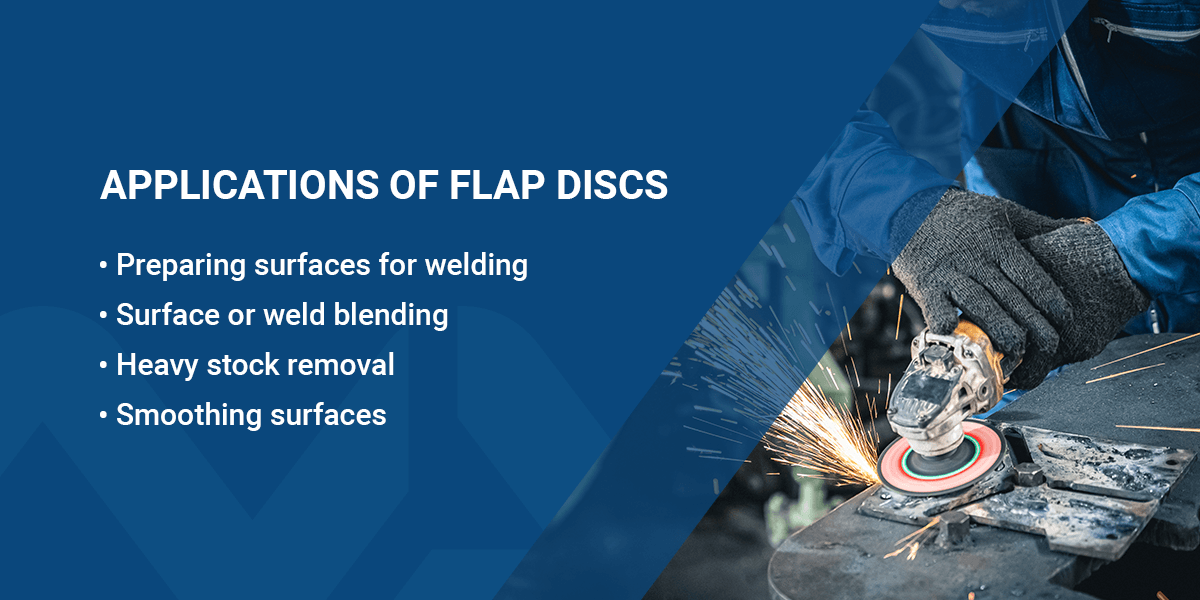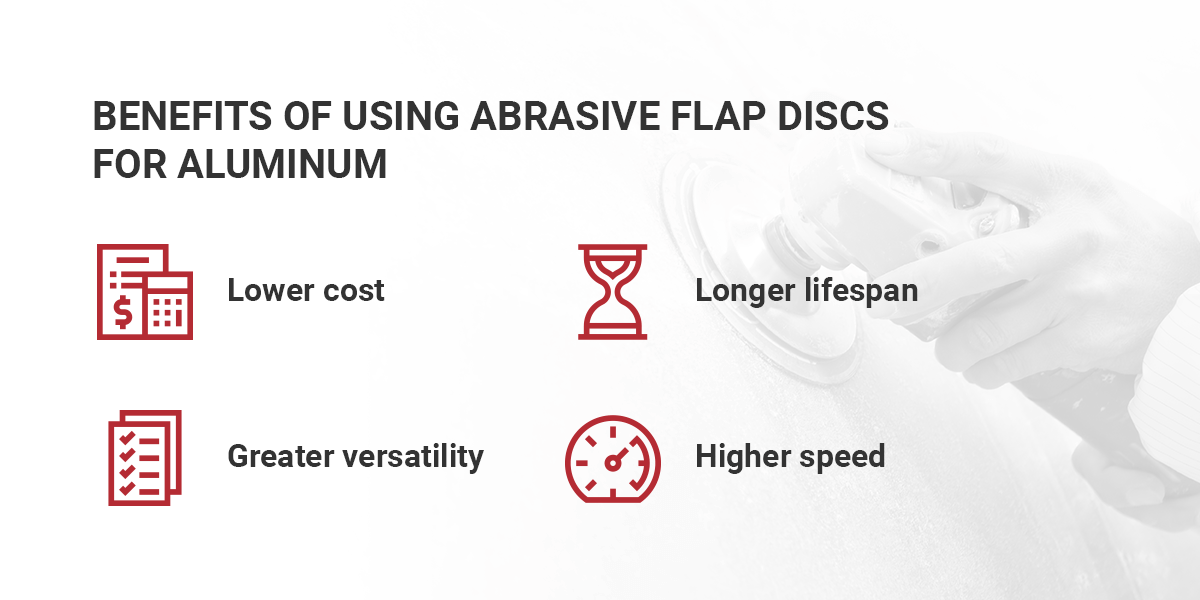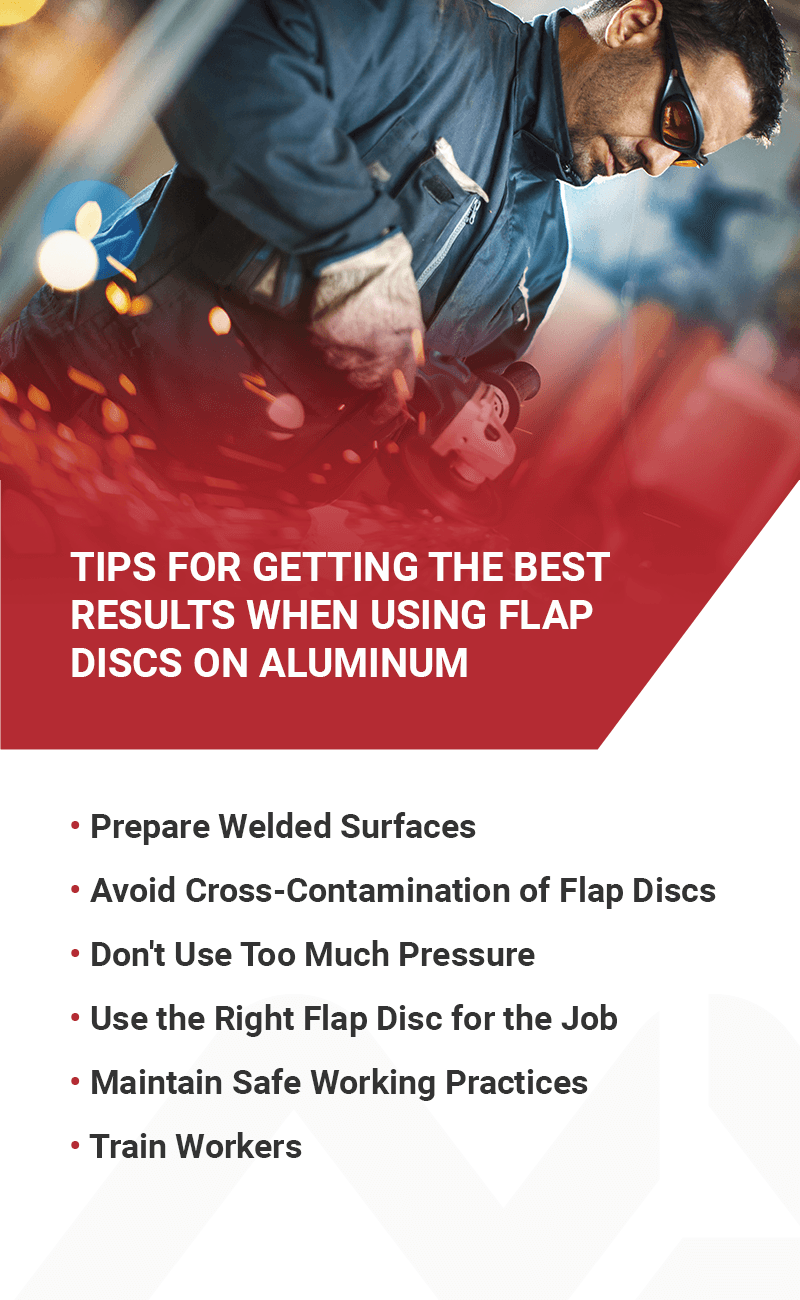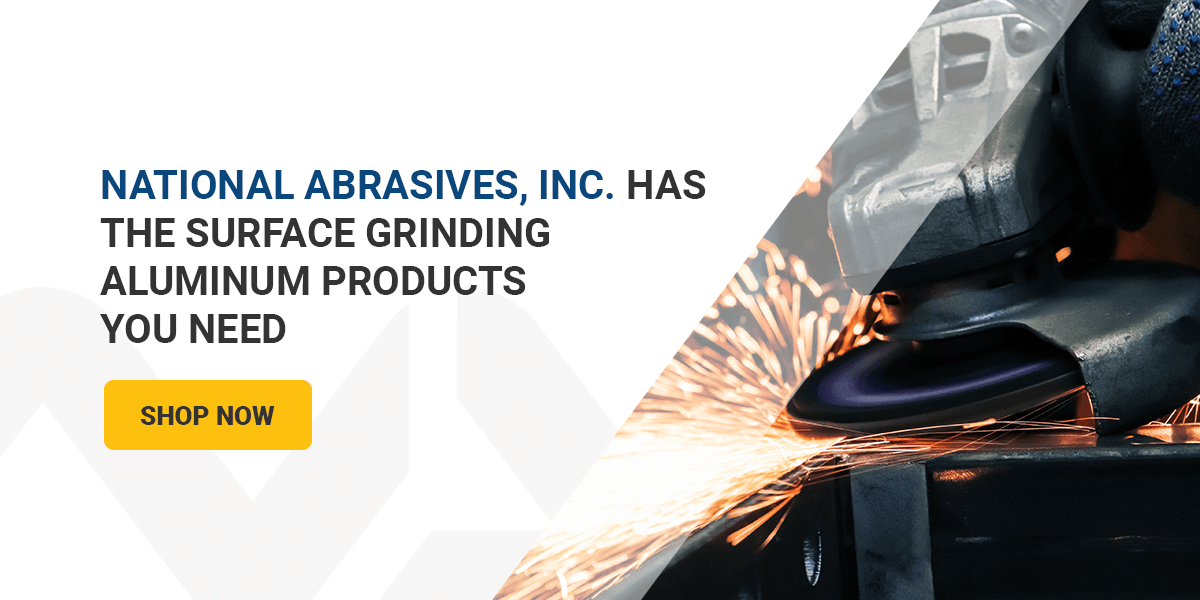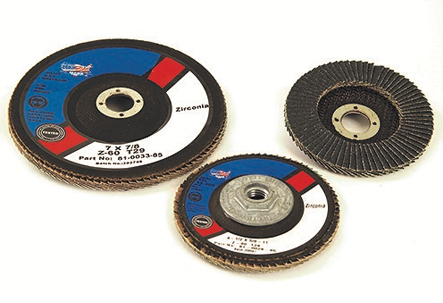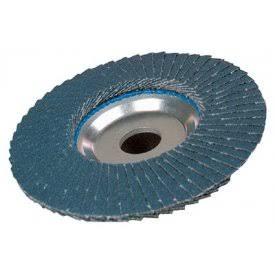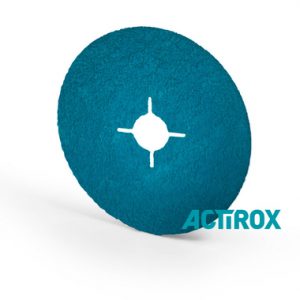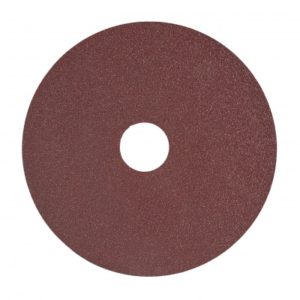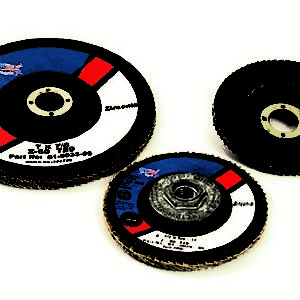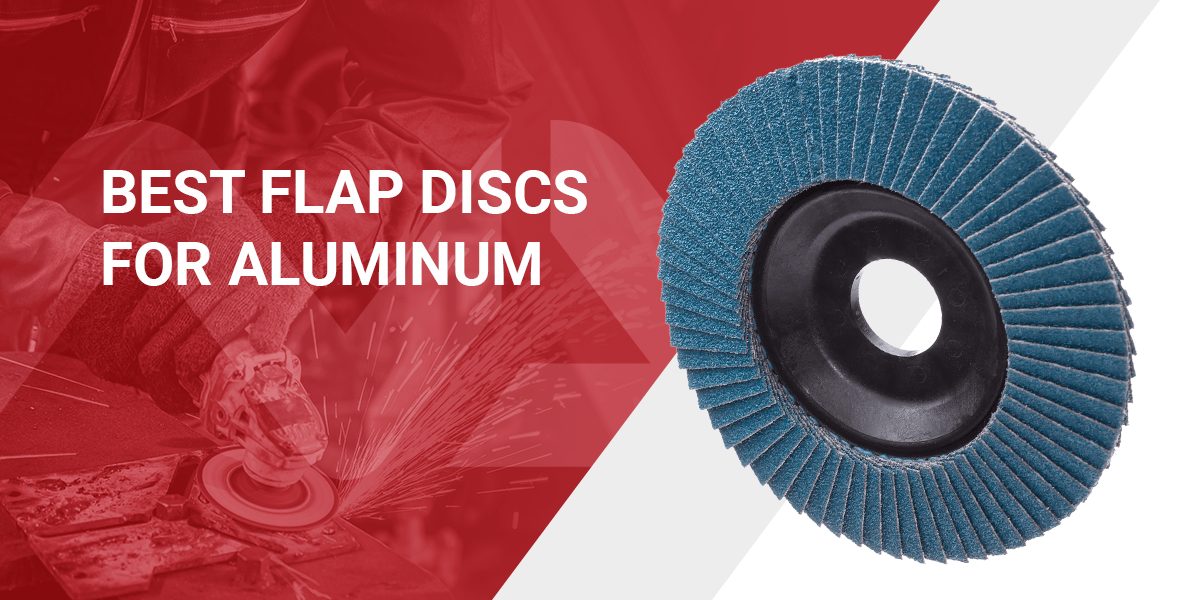
Does your business or manufacturing operation involve the processing of aluminum? If so, you likely rely on grinding for functions such as deburring and cleanup. Since using the right abrasive is essential for optimizing grinding results and overcoming the challenges of aluminum, you’ll want to know how to choose the most appropriate aluminum grinding wheel for the task.
You can find a few different grinding wheels available today, but they all consist of an abrasive compound that performs the desired grinding/cutting action. An excellent grinding wheel for aluminum will feature a flap disc as its abrasive.
As you choose what abrasive is best for your aluminum grinding and finishing needs, find out more about what flap discs are, why they excel when working with aluminum, their primary benefits and the challenges they overcome. You might also be interested in learning more about the top tips for getting the best performance out of your flap disc.
What Are Flap Discs?
Flap discs are an abrasive designed to shape and conform metals, with users employing them to perform various grinding and finishing tasks. These discs feature overlapping and layered abrasive material sections, with these sections referred to as flaps. Flap discs are one of the best choices when you’re looking for a grinding wheel for aluminum, as they grind metal surfaces at lower temperatures compared to other abrasive discs.
Why Do You Need High-Quality Abrasives When Grinding and Finishing Aluminum?
Aluminum is the most universal, widely found metal in the world, used in creating everything from appliances and food and beverage packaging to electronics. While aluminum is a popular metal, it presents many challenges other types of metals don’t exhibit. Effective grinding methods and tools must overcome these problems to avoid causing damage to the surface.
Without the proper tools and accessories, handling and grinding aluminum can become incredibly difficult. The best way to avoid mishaps and damages to your equipment is by using the right type of aluminum abrasive, with the best abrasives for aluminum being depressed-center wheels, fiber discs and flap discs. When used correctly, these products provide effective deburring or finishing results.
Types of Grinding Wheels for Aluminum
The type of aluminum you’re using and the project you’re working on will help you determine the best abrasives for aluminum. Consider the following options for grinding wheels:
- Fiber Discs: Resin fiber discs usually have zirconia grains that utilize cooling during cutting, making them ideal for aluminum repair and cleanup projects.
- Cutoff Wheels: Cutoff wheels, also known as parting wheels, are thin and self-sharpening for trimming and removing stock.
- Depressed-Center Wheels: Depressed-center wheels are similar to cutoff wheels but have a depressed center hub that lets users lock the nut to recess. By recessing the lock nut, these wheels can handle more extreme right-angle aluminum grinding.
- Flap Discs: Flap discs consist of abrasive cloth, backing disc and adhesive material that attach the cloth and disc. They are ideal for simultaneous deburring and cleanup, saving significant resources in the process.
Why Are Flap Discs the Best Abrasive for Aluminum?
Among the many options for grinding aluminum, flap discs provide a good balance between depressed-center wheels and fiber discs. Essentially, flap discs take the benefits of each of these types of grinding wheels and combine them, making them the best abrasive for aluminum.
While depressed-center wheels excel at deburring, flap discs offer similar deburring performance. Fiber discs allow for cooler cutting tasks, making them ideal when needing to perform cleanup to finish a surface. Though fiber discs are great at cleanup, flap discs can also perform all of a fiber disc’s cleanup tasks. Due to a flap disc’s ability to provide exceptional deburring and cleanup performance, they’re a balanced option for when your project requires deburring and cleanup work.
What’s the Difference Between Flap Discs and Flap Wheels?
Sometimes, people confuse flap discs and flap wheels, as they’re fairly similar. While you can use a flap wheel for polishing aluminum as you can with flap discs, their designs differ significantly. Flap wheels have flaps arranged for polishing cylindrical interiors, fanning outward from a central core.
In contrast, flap discs flaps overlap each other and lie on the disc for polishing flat surfaces. Flap wheels are a great choice if you need to polish a cylindrical object’s interior, but you’ll want to use flap discs for flat surfaces.
Parts of Flap Discs and How They Work
As you think about investing in flap discs, you’ll likely want to know more about how they work. These discs contain three main parts — a backing disk, abrasive cloth and adhesive. All three components work together for the disc’s operation and functioning.
Find out more about what role these flap disc parts play below:
Backing Disc
The backing of the flap disc provides the support, holding the abrasive material in place. Fiberglass is commonly used as a backing disc material for flap discs, such as in this T27 ZIRC SIA flap disc. Fiberglass provides durability and some vibration absorption. With use, the fiberglass backing will wear away. Since fiberglass backing options come in varying numbers of layers, check the layer number before choosing a disc. More layers on the disc correlate to greater strength for the flap disc.
Other manufacturers may use different backing materials or have several backing options within their lineup. For example, this T27 ZIRC SIA flap disc has a plastic backing rather than fiberglass. Nylon is one of the most popular types of plastic backing. Since operators can trim away the backing as they use the discs, these types of flap disc backings offer greater longevity for the disc.
Lastly, metal backings are another choice for flap discs. Typically, these extra-strong backings aren’t used for grinding aluminum because they cost more. Metal backings only make economic sense for situations that require extra backing strength for safety, such as when working with stone or concrete.
Abrasive Cloth
The abrasive cloth on flap discs isn’t a single piece but rather several overlapping parts. These parts contain the abrasive material for grinding. Due to the orientation of the flaps, the best method of using flap discs is grinding at a right angle to the material. By grinding at a right angle, you’ll put the greatest surface area of the disc against the metal.
You can think of the abrasive cloth of the flap disc as the working portion of the disc. Keep in mind that flaps will use different materials and have varying grits for providing grinding or finishing.
Adhesive Material
Lastly, the adhesive material holds the flaps onto the backing. This material must work well to keep the flaps secure throughout several uses of the disc. Quality flap discs use strong adhesives to ensure they maintain their performance over time.
Applications of Flap Discs
Flap discs have many applications for aluminum across various industries. The ability to grind and finish surfaces with flap discs makes them extremely versatile and a good investment for several projects. Find out more about the primary applications of flap discs below:
- Preparing surfaces for welding: Preparation of an aluminum surface before welding is essential. Aluminum doesn’t rust as iron does, but it does oxidize. Oxidized aluminum surfaces can contaminate welding material, reducing the strength of the weld. Due to the risk of contaminants, one of the best applications of flap discs is to grind away the oxides produced on the aluminum surface right before welding.
- Surface or weld blending: Smoothing welding to finish an aluminum surface is another use of flap discs. These discs can also assist with other projects that require blending surfaces. For surface or weld blending, T27 flap discs may offer the finishing capabilities required.
- Heavy stock removal: Flap discs work well to remove heavy stock from the surface. This type of grinding will require more pressure on the grinder to let the disc remove tougher, larger pieces. When doing heavy stock removal, the best flap disc for aluminum is a conical T29 flap disc, as it offers the angled grinding power needed for this task.
- Smoothing surfaces: Smoothing surfaces on aluminum projects require a lighter touch than when doing heavy stock removal. T27 flap discs will suffice for this type of finishing on the project, especially when used with a lighter pressure on the grinder.
Benefits of Using Abrasive Flap Discs for Aluminum
When choosing grinding discs or wheels for use with aluminum, flap discs are highly beneficial in multiple situations due to their lower cost, longevity, versatility and speed. Find out more about the top advantages of using abrasive flap discs for aluminum below:
- Lower cost: Compared to other types of grinding discs or wheels, flap discs are an economical option. Plus, because these discs have longevity and versatility, an investment in these types of discs will last a long time and have many uses.
- Longer lifespan: Flap discs can last for a long time, especially when used for polishing rather than grinding or cutting. As the top edges of each flap wear away during use, fresh abrasive material becomes exposed. Therefore, these discs provide the same grinding power throughout their life. Plus, the material used for abrasive surfaces is durable and lasting.
- Greater versatility: Flap discs offer versatility not seen in other options. These discs can do surface preparation or finishing. Plus, flap discs designed specifically for use with aluminum have a surface infused with a chemical that will melt from the friction and coat the surface for cooler grinding. Additionally, the operator has more control over the use of the disc. By changing the pressure on the grinder, they can adjust the way they use the flap disc for coarse or smooth finishes.
- Higher speed: When you compare flap discs to hand-finishing methods for aluminum surfaces, flap discs offer a faster way to smooth out the surface.
How to Choose the Right Flap Disc for Aluminum Grinding or Finishing
Flap discs come in two types based on their shape and function. Type T27 discs have a design optimized for use at a right angle to the surface, while type T29 flap discs work best at shallow angles due to their more angled flaps and slightly conical shape. Besides these two main types of flap discs, you’ll also see flap discs with different densities and numbers of grits.
As you choose the best flap disc for aluminum, review the main factors you’ll want to look for when selecting a flap disc for your aluminum grinding or finishing project below:
- Right-angled or shallow-angled grinding: Right-angled T27 discs work best at grinding at a perpendicular angle to the surface, allowing for smoother finishes or blending. When conducting work that requires shaping or rough grinding, a shallow-angled T29 disc offers better performance by ensuring more power from the angle. The flaps on these discs have a steeper angle than on T27 discs, exposing more abrasive material to the surface for removing heavy stock or shaping.
- Grit: The grit of the abrasive surface on the flap disc will determine how well the disc can grind. Grit numbers relate to the coarseness of the abrasive material. Coarse grits have lower numbers. These grits work best for removing large amounts of metal from the surface. However, finer grits will have higher numbers. Use flap discs with these high grit values for smoothing or finishing parts of a project.
- Disc density: Disc density refers to how many flaps a disc has and its spacing. Two types of disc densities exist — standard and high. Standard density discs have a lower number of flaps compared to high-density discs. Therefore, standard density discs have similar uses to lower grit number abrasives, both types working best for heavy-duty use. High-density discs have more flaps, so they perform better when you need a finer finish on the metal.
What Are the Primary Challenges of Grinding and Finishing Aluminum?
When you’re planning on using flap discs for aluminum, it’s critical to understand the primary challenges associated with the metal. Learn more about the primary challenges of grinding and finishing aluminum below:
- Low melting point: Aluminum has a relatively low melting point compared to other metals. Therefore, low temperatures generated by friction during some grinding processes can cause the surface to melt. When this process happens, bits of aluminum from the surface can collect on the abrasive, reducing the abrasive’s effectiveness.
- Surface contamination: Another concern when working with aluminum is the metal’s tendency to absorb contaminants from the grinder. Cleaning off the grinding surface before using it can prevent this type of contamination. This problem can also compromise the integrity of welds by contaminating the weld, reducing its strength.
- Finish removal: Finally, when using abrasives on aluminum, use a light touch. The delicate nature of aluminum requires gentle use of abrasives to avoid rubbing off the finish, especially when using abrasive tools for polishing or smoothing welded pieces.
Tips for Getting the Best Results When Using Flap Discs on Aluminum
While there are challenges to working with aluminum, using a flap disc properly can help you address them and ensure you the best results possible. By following a few primary tips, you can improve your jobs, become more efficient and avoid wasting discs.
Review the main tips for getting the best results when using flap discs on aluminum below:
1. Prepare Welded Surfaces
When working with aluminum, always ensure proper surface preparation before welding. Use a surface grinder to remove aluminum oxides from welding sites. By removing these aluminum oxides, the weld will have a better chance to hold onto the metal.
2. Avoid Cross-Contamination of Flap Discs
Don’t use the flap discs you use with other metals to grind aluminum. The particles from the other project can contaminate the surface of the aluminum, affecting weld strength or finish appearance. Specify discs for working with aluminum and keep them separated and labeled to prevent cross-contamination.
3. Don’t Use Too Much Pressure
Excessive pressure can increase the workload of the operator. It causes the aluminum to melt and adhere to the disc in a process known as loading. When you put too much pressure on the aluminum, the metal on the flaps will cover the abrasive material, preventing it from working as needed.
Don’t use lubricants, waxes or oils to reduce the friction heat created during grinding. These materials can also clog the disc, contaminate the surface or create a fire hazard. Instead, to avoid causing problems from too much heat when working with aluminum, lower the pressure used and choose the appropriate grit and disc density for the project.
4. Use the Right Flap Disc for the Job
Pick the best disc for the way you want to use it. For example, for removing material or shaping, select a conical T29 flap disc. Use these types of discs at a 15-degree angle to the surface to get the greatest abrasive-to-surface contact. Maximizing contact will also optimize the efficiency of the flap disc. When doing finishing or preparing surfaces for welding, choose a flat T27 disc and grind it flat on the surface for finishing.
5. Maintain Safe Working Practices
Safety is crucial in all work environments. However, using the correct safety protocols and personal protection equipment is especially critical for people grinding aluminum. The metal dust created by grinding is a health hazard that can lead to lung damage over time. Short-term exposure to aluminum can lead to metal fume fever. Symptoms from this condition appear within a few hours of aluminum dust exposure, last up to two days and include the following:
- Chest tightness
- Cough
- Fever
- Chills
- Body aches
- Headache
- Metallic taste in the mouth
Anyone working near aluminum dust needs to take serious measures to ensure their safety and that of others. Individuals grinding aluminum should do the following — use respirators, work in a well-ventilated area and wash their hands after working around aluminum grinding tools. These steps can minimize exposure to aluminum dust and the chances of negative health effects it brings.
6. Train Workers
Flap discs require more skill when using them to grind or finish aluminum. Therefore, when integrating flap discs into grinding and finishing projects, make sure all workers have adequate training to avoid damaging the metal or injuring themselves.
National Abrasives, Inc. Has the Surface Grinding Aluminum Products You Need
Of course, while flap discs perform exceptionally well, there may be situations that require alternatives for grinding aluminum. Other options for grinding include resin fiber discs, depressed-center wheels and cutoff wheels. For specific projects, these alternatives may provide more benefits for working with aluminum. Luckily, you don’t have to go far to find these and other solutions for your grinding or finishing projects.
At National Abrasives, Inc., we offer top abrasives for aluminum grinding aluminum, including:
- Bullard cutoff wheels: Cutoff wheels have superior grinding performance and are extremely durable. These wheels are available in a range of sizes to meet your specific project needs.
- Bullard depressed-center wheels: We also offer depressed-center wheels from Bullard for your most challenging right-angle aluminum surface grinding applications across all industries and sectors, including metal fabricating, pipe beveling and petrochemical maintenance.
- Flap discs: You will find a wide assortment of flap discs in grits ranging from 40 to 80G. These discs have all the benefits of both fiber discs and depressed center wheels for an adaptable and cost-efficient grinding solution.
- Resin fiber discs: We offer German-made resin fiber discs designed with quality materials, such as aluminum oxide, zirconia and ceramics. When grinding aluminum, we recommend zirconia resin fiber abrasives. These discs’ grit options range from 36 to 80G.
Purchase Abrasives for Grinding Aluminum Online
With our wide selection of abrasives and convenient purchasing options, you can find the perfect abrasive for your aluminum grinding and finishing needs when you turn to National Abrasives, Inc. Our secure, user-friendly online store is always open for business, allowing you to purchase the right abrasive as soon as you need it. Alongside our cost-effective aluminum grinding wheel prices, you also get the benefit of free shipping. As a National Abrasives, Inc. customer, you will experience the best service and support in the industry.
Check out our current inventory of abrasives and flap discs for grinding aluminum, and place your order today!

